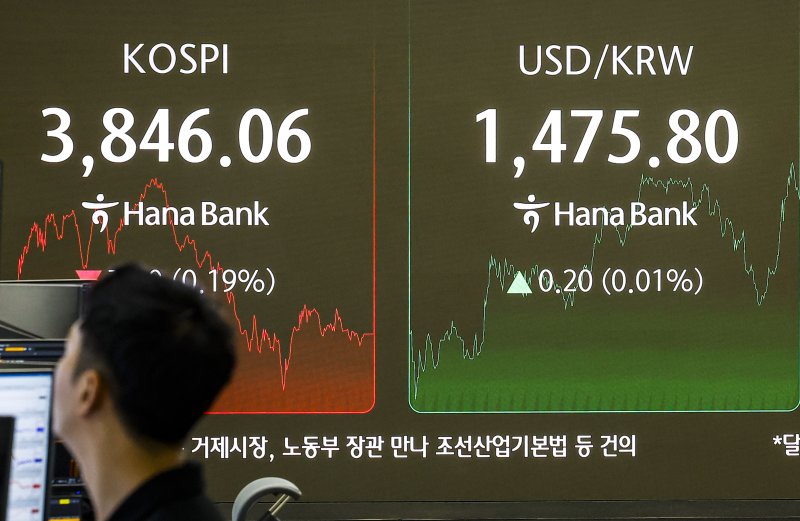'Emergency Over High Exchange Rates'—Foreign Exchange Authorities Hold Four-Party Talks with National Pension Service: 'All-Out Efforts for Currency Stability' [Comprehensive]
- Input
- 2025-11-24 16:49:27
- Updated
- 2025-11-24 16:49:27

[Financial News] As the high exchange rate trend has persisted for several months, the Ministry of Economy and Finance, Ministry of Health and Welfare, Bank of Korea (BOK), and National Pension Service (NPS) held a four-party meeting to stabilize the exchange rate.
On the 24th, the Ministry of Economy and Finance announced that it had formed a four-party consultative body to monitor the impact of the NPS’s overseas investment expansion on the foreign exchange market and held its first meeting.
A representative from the Ministry of Economy and Finance stated, 'The four-party consultative body is discussing ways to harmonize the profitability of the NPS with the stability of the foreign exchange market.'
Starting with this initial meeting, the four-party consultative body plans to convene regularly to ensure exchange rate stability.
Key topics at the meeting included measures to reduce volatility in the foreign currency market caused by the NPS’s large-scale overseas investments. When the NPS converts Korean won to US dollars for overseas investments, it is believed to contribute to a shortage of dollars, thereby pushing up the exchange rate.
In this context, economic authorities have reportedly requested the NPS to consider strategies such as strategic FX hedging—selling 10% of its dollar-denominated overseas assets if the exchange rate exceeds a certain threshold—to increase dollar supply. As of the end of August, about 44% of the NPS’s total assets of 1,322 trillion won are invested overseas.
It is also expected that the Bank of Korea and the NPS will extend their $65 billion FX Swap agreement, which is set to expire at the end of this year. Direct dollar transactions between the NPS and the Bank of Korea help stabilize dollar supply and demand in the foreign exchange market.
Economic authorities plan to actively utilize all available measures, including the NPS’s overseas investments, to address uncertainties in the foreign exchange market.
Previously, on the 19th, Koo Yun-cheol, Deputy Prime Minister and Minister of Economy and Finance, expressed concern over the current rise in the exchange rate. He explained, 'Despite a current account surplus of about $90 billion, more foreign currency is flowing overseas, leading to a dollar shortage.' He added, 'We are working to stabilize the exchange rate through consultations with key foreign exchange market participants such as the NPS,' and announced that measures to resolve foreign exchange market uncertainties would be prepared soon.
However, some have raised concerns about mobilizing the NPS, which manages the nation’s retirement assets, for exchange rate stabilization. There are worries that FX hedging and changes to the NPS’s overseas investment strategies could negatively impact long-term pension returns. With structural reforms delayed, the NPS is projected to run a deficit by 2048 and exhaust its funds by 2064.
The recent unusual surge in the exchange rate is attributed to structural and complex factors, including a weakening of Korea’s economic fundamentals, ongoing uncertainty over $200 billion in investments in the US, and increased overseas stock investments by individual investors.
On this day, the US Dollar–South Korean Won exchange rate closed at 1,477.1 won, up 1.5 won from the previous session. This marks the highest level in seven and a half months, indicating that the high exchange rate trend is becoming entrenched.
[email protected] Jung Sang-geun Reporter